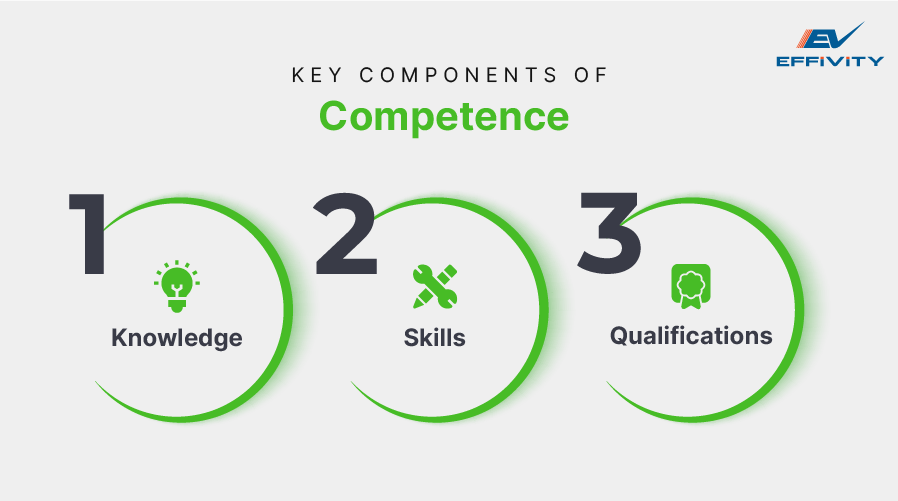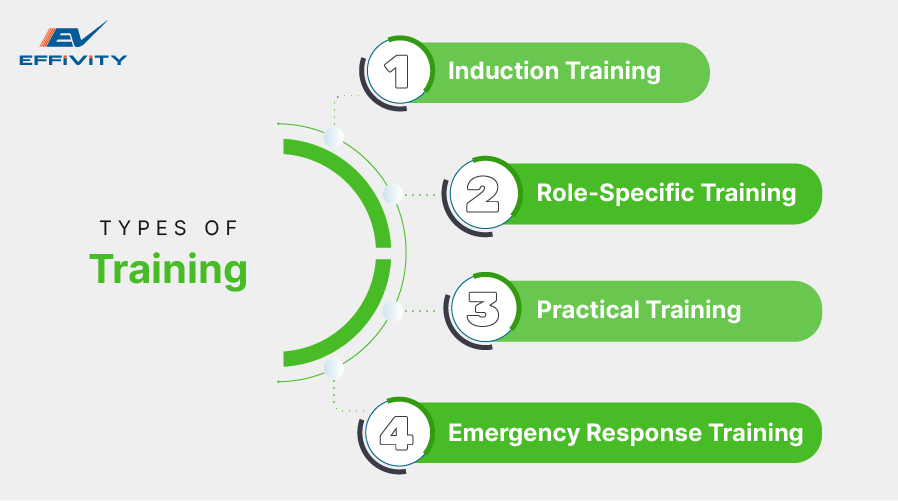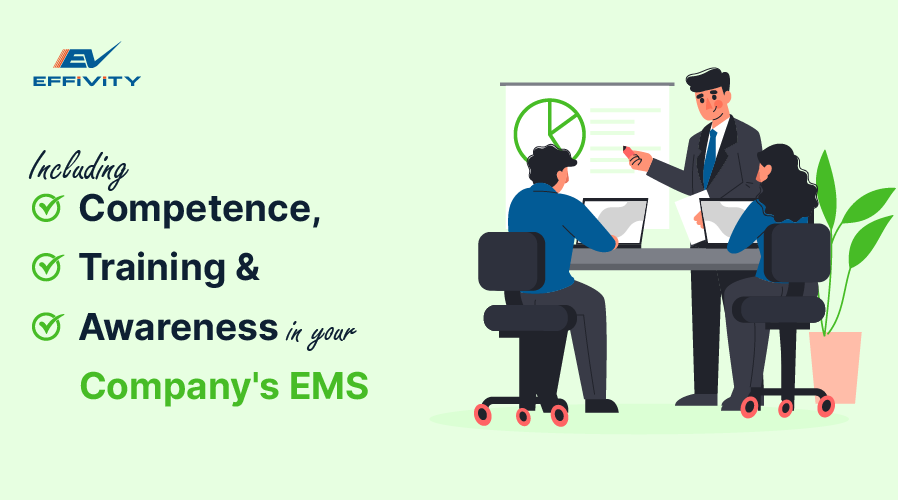Understanding the critical requirements of the ISO 14001 standard is the first step to achieving and maintaining environmental compliance. An efficient environmental management system software is needed to implement the environmental strategy and procedures as well as identify and manage your critical environmental aspects.
Within an EMS, the pillars of competence, training, and awareness play a vital role in ensuring that all employees are informed and equipped with the necessary skills and knowledge to maintain and improve environmental performance.
This article explores the importance of these elements and how they can be effectively integrated into your company's EMS.
Critical Requirements of the ISO 14001
The ISO 14001 standard lays down various critical requirements to ensure proper implementation, management, and performance of environment management systems in the organization. One such requirement includes support for the employees in terms of competence, training, and awareness of the environment management system.
ISO 14001 focuses on employees' ability to follow EMS-critical processes to produce a high-quality product. According to the standard, the organization must ensure that internal or external workers responsible for environmentally critical processes have the competence, awareness, and training to prevent any negative impact on the environment from their operations.
Understanding Competence in EMS
ISO 14001 emphasizes the need for organizations to ensure that personnel whose work can significantly affect the environment are competent.
Competence in the context of an EMS refers to the ability of personnel to perform their environmental responsibilities effectively. It encompasses the knowledge, skills, experience, and qualifications required to carry out tasks that can impact environmental outcomes.
For instance, if certain chemical processes within your manufacturing process require the solution's concentration to be at a specific pH to prevent air emissions, the solution's concentration needs to be preserved, and the operator should have the knowledge and competence to do this. The operator does not need chemistry qualifications, but he must have chemical knowledge or training to avoid any undesirable environmental impact.
Key Components of Competence

1. Knowledge
Employees must deeply understand environmental aspects, regulations, and the company's EMS policies.
2. Skills
Employees must have the practical abilities to implement EMS procedures and respond to environmental incidents related to their responsibilities.
3. Qualifications
Formal education and certifications can validate an individual's capability in environmental management.
To build competence, you must identify organizational roles that significantly impact the environment. Once these roles are identified, it's essential to determine the specific competencies required for each. This process often involves a combination of formal education, on-the-job training, and continuous professional development.
The Role of Training in Enhancing Competence
After recognizing which competencies are needed to run EMS processes to evade potential environmental impacts, the positions need to be filled with the right people. Moreover, if people responsible for a job are not as competent as required, they must be trained.
Training is the bridge that connects competence with practical application. Through targeted training programs, companies can equip their employees with the necessary skills and knowledge to fulfil their environmental responsibilities effectively. ISO 14001 mandates that organizations should provide effective training aligned with the employee's role and the potential environmental impact of their activities.
Training can be of different types, depending on the employee role or environmental process within the EMS, such as

- Induction training which involves introducing new employees to the company's EMS policies, procedures, and key environmental aspects.
- Role-specific training can be tailored to specific duties and environmental impacts of a particular job.
- Practical training where a new or inexperienced employee can work under experienced personnel to gain the knowledge and experience needed to do the job properly.
- Emergency response training prepares employees to manage and mitigate environmental emergencies effectively.
Training should not be a one-time event but rather an ongoing process that evolves with the company's environmental objectives and regulatory requirements. It is important to conduct regular evaluations to assess the effectiveness of the training programs and adjust address any gaps in knowledge or skills.
Promoting Awareness in the EMS
Awareness within an EMS goes beyond simply knowing about environmental issues; it involves cultivating a proactive mindset among employees to recognize the importance of their actions in environmental performance.
Awareness is about ensuring that every employee, regardless of their role, understands how their work impacts the environment and the collective responsibility they share in achieving the company's environmental goals.
ISO 14001 focuses on employee awareness in these four areas-

1. Environmental Aspects and Impacts
An employee might recognize that uncontrolled waste emissions from a process can harm the environment if not managed correctly. However, they may not fully understand the specific controls required to prevent such harm.
To ensure successful EMS implementation and compliance, employees must be aware of the control procedures and the benefits of adhering to them.
2. Policies and Procedures
People are more likely to follow a critical procedure or policy if they understand its purpose. For example, simply instructing employees to follow pollution control measures might be less effective.
Instead, if they understand that failing to follow the process could result in significant fines, environmental damage, or even harm to the company's reputation, they are more likely to adhere to the procedures. You must clearly communicate the need for specific EMS policies and procedures.
3. Likely Consequences
When employees fully understand the potential consequences of not following certain EMS procedures—such as fines, environmental harm, and financial repercussions for the company—they are more inclined to adhere to the rules.
Additionally, knowing the broader importance of their work can instil a sense of pride and satisfaction, further motivating them to follow EMS best practices.
4. Responsibilities
Uncertainty about roles can lead to confusion and low productivity. This issue is particularly critical for contractors or temporary employees who may not be familiar with specific company processes.
For example, if a contractor is not informed that fluorescent light bulbs must be recycled and not disposed of with regular garbage, they may inadvertently cause environmental harm. Clearly defining roles and responsibilities ensures everyone understands their role in maintaining environmental standards.
Engaging employees at all levels and fostering a sense of ownership and accountability are critical to building a robust environmental awareness program.
Wrapping Up
Integrating competence, training, and awareness into your company's EMS is not just about meeting regulatory requirements; it's about building a culture of environmental responsibility.
While implementing competence, training, and awareness in your EMS may require effort and resources, the benefits far outweigh the costs. A well-functioning EMS helps safeguard the environment, ensures compliance with regulations, and enhances the company's reputation.
The result? A more sustainable business that not only meets its environmental objectives but also gains the trust and confidence of its stakeholders.






























